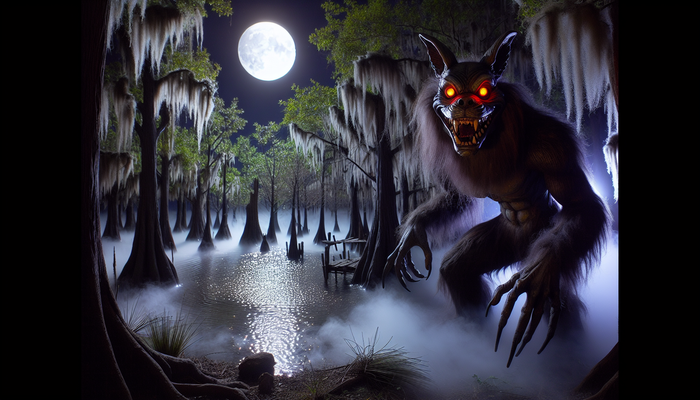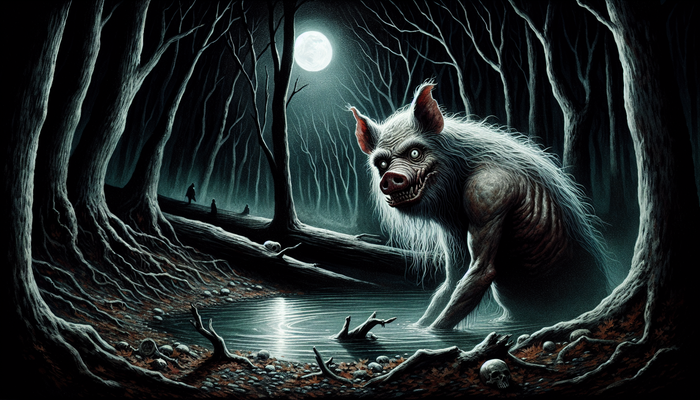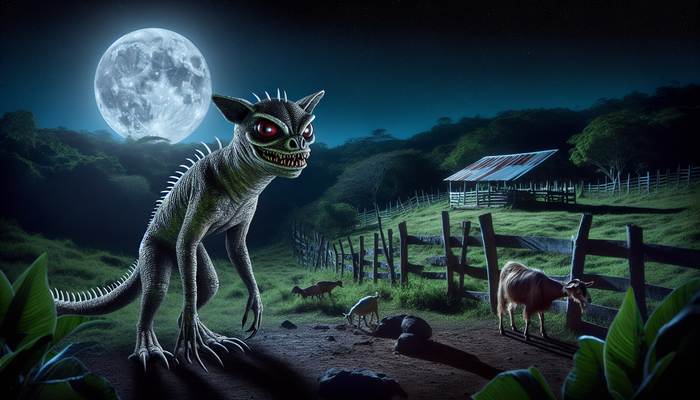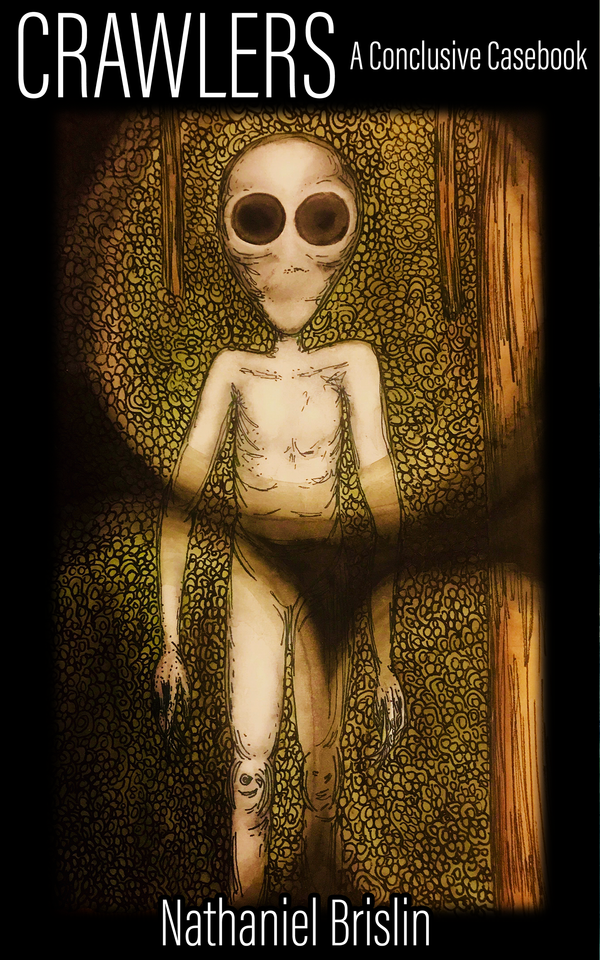Stalking the Swamps: Florida's Fearsome Cryptids
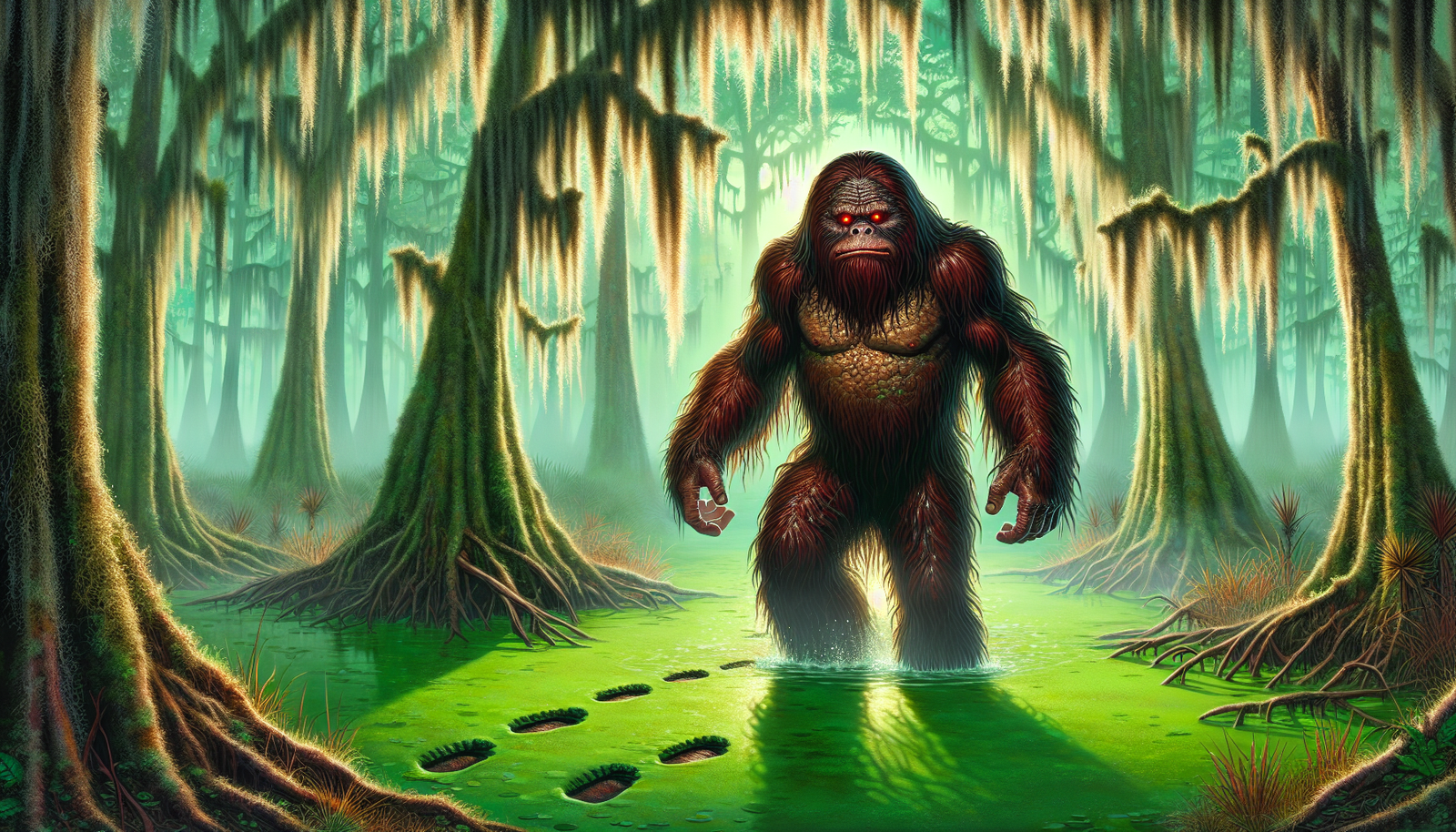
By Dr. Elizabeth Harper, Cryptozoologist and Biologist
The Allure of Cryptids and the Unknown
As a seasoned biologist and cryptozoology enthusiast, I've always been drawn to the mysteries that lurk in the shadows of our world. There's something inherently captivating about the idea of creatures that exist just beyond the reach of scientific understanding—beings that have managed to elude confirmation despite countless sightings and stories passed down through generations. And when it comes to cryptids, few places have captured my imagination quite like the swamps and forests of Florida.
Florida's unique position as a hotspot for cryptid sightings is no coincidence. With its vast expanses of untamed wilderness, diverse ecosystems, and rich cultural heritage, the Sunshine State provides the perfect backdrop for tales of mysterious creatures to take root and flourish. From the infamous Skunk Ape to the enigmatic Wampus Cat, Florida's cryptids have become the stuff of legend, inspiring fear, fascination, and endless speculation among those who dare to believe.
In this article, we'll embark on a thrilling journey into the heart of Florida's most famous cryptid legends. We'll explore the origins of these creatures, examine the evidence that supports their existence, and delve into the theories that attempt to explain their elusive nature. Along the way, we'll discover the cultural significance of these cryptids and the enduring impact they've had on the state's identity and imagination. So grab your gear, and let's venture into the swamps and forests of Florida, where mystery and wonder await at every turn.
The Skunk Ape: Florida's Bigfoot
Of all the cryptids that call Florida home, none is more famous or more controversial than the Skunk Ape. This foul-smelling, ape-like creature has been the subject of countless sightings and investigations over the years, capturing the imagination of cryptozoology enthusiasts and skeptics alike.
Description and Characteristics
The Skunk Ape is typically described as a large, upright-walking primate, standing between 5 and 7 feet tall. Its body is covered in dark, shaggy hair, giving it a distinctly ape-like appearance. However, what sets the Skunk Ape apart from other Bigfoot-like creatures is its pungent odor, which has been likened to a combination of rotten eggs, methane, and wet dog. This unmistakable stench is said to linger long after the creature has passed, serving as a calling card of sorts for those who claim to have encountered it.
Other distinguishing features of the Skunk Ape include its glowing red eyes and powerful build. Eyewitnesses have reported seeing the creature's eyes shine in the darkness, reflecting light like those of a nocturnal animal. Its muscular frame and broad shoulders suggest immense strength, adding to the sense of intimidation and fear that often accompanies Skunk Ape sightings.
History and Origins
The legend of the Skunk Ape has deep roots in Florida's history, with stories of the creature dating back centuries. Native American folklore, particularly from the Seminole and Miccosukee tribes, speaks of the "Esti Capcaki" or "Tall Man"—a hairy, man-like being that roamed the swamps and forests of the region. These ancient tales laid the foundation for the modern Skunk Ape legend, which gained significant traction in the latter half of the 20th century.
During the 1960s and 1970s, Florida experienced a surge in Skunk Ape sightings, with reports coming in from all corners of the state. From the dense swamps of the Everglades to the remote forests of the Panhandle, people claimed to have encountered the creature in various settings. This wave of sightings coincided with a growing interest in cryptozoology and the search for undiscovered species, fueling the public's fascination with the Skunk Ape and cementing its place in Florida's cryptid lore.
Famous Sightings and Evidence
One of the most famous pieces of evidence in the Skunk Ape saga emerged in 2000, when an anonymous woman mailed two grainy photographs to the Sarasota County Sheriff's Department. The images, which came to be known as the "Myakka Skunk Ape Photos," purportedly showed a large, hairy creature crouching in the underbrush. The woman claimed to have captured the Skunk Ape on film as it raided her backyard, stealing apples from a basket on her porch.
The Myakka Skunk Ape Photos quickly became a sensation in the cryptozoology community, with experts and enthusiasts alike debating their authenticity. Some argued that the creature in the images was simply a misidentified bear or an elaborate hoax, while others maintained that the photos provided compelling evidence of the Skunk Ape's existence. To this day, the Myakka Skunk Ape Photos remain a topic of heated discussion and analysis among those who study Florida's cryptids.
Another notable figure in the Skunk Ape world is Dave Shealy, a self-proclaimed Skunk Ape researcher who operates the Skunk Ape Research Headquarters in Ochopee, Florida. Shealy claims to have had multiple encounters with the creature over the years, and has dedicated his life to proving its existence. His headquarters serves as a museum and information center for Skunk Ape enthusiasts, housing a collection of alleged footprint casts, hair samples, and other artifacts related to the creature.
Theories and Explanations
As with any cryptid, the Skunk Ape has inspired a range of theories and explanations attempting to account for its existence and elusiveness. One popular theory suggests that the Skunk Ape may be an undiscovered primate species, perhaps a remnant population of a prehistoric ape that has managed to survive in the remote swamps and forests of Florida. Proponents of this theory point to the creature's ape-like appearance and behavior as evidence of its potential primate origins.
Another explanation for Skunk Ape sightings is the misidentification of known animals, such as bears or feral hogs. In the heat of the moment, and under less-than-ideal viewing conditions, it's possible for witnesses to mistake these animals for something more exotic and mysterious. The Skunk Ape's pungent odor could be attributed to the natural musk of these animals, or perhaps to the creature's diet and habitat.
Of course, there are also those who believe that the Skunk Ape is nothing more than a product of folklore and hoaxes. Skeptics argue that the lack of concrete, scientifically verifiable evidence points to the creature's mythical status, and that alleged sightings and photographs can be easily explained away as misidentifications or deliberate fabrications. As with many cryptids, the debate over the Skunk Ape's existence remains ongoing, with passionate arguments on both sides.
The Wampus Cat: A Feline Enigma
Moving from the swamps to the forests, we encounter another of Florida's intriguing cryptids: the Wampus Cat. This mysterious feline has captured the imagination of those who have heard its eerie cries echoing through the night, or caught a glimpse of its glowing eyes in the darkness.
Description and Characteristics
The Wampus Cat is typically described as a large, six-legged cat with a human-like face. Its body is said to be covered in dark, matted fur, and its eyes are often reported to glow an eerie yellow or green in the darkness. Some accounts even attribute supernatural abilities to the Wampus Cat, such as the power to hypnotize its prey or to transform into a human form.
One of the most distinctive features of the Wampus Cat is its six legs. This unusual characteristic sets it apart from any known feline species and has led to speculation about its origins and nature. Some researchers have suggested that the extra limbs could be the result of a genetic mutation or a rare birth defect, while others believe that the six-legged appearance may be a product of folklore and exaggeration.
Origins in Cherokee and Appalachian Folklore
The legend of the Wampus Cat has its roots in Cherokee and Appalachian folklore, where it is often portrayed as a creature of punishment and retribution. One common tale tells of a young woman who was transformed into the Wampus Cat as punishment for her curiosity and disobedience. According to the story, the woman donned the skin of a mountain lion and spied on a sacred men's ceremony, only to be discovered and cursed to roam the forests as a half-human, half-feline creature.
Variations of the Wampus Cat legend can be found throughout the southeastern United States, with each region adding its own unique twists and details to the story. In some versions, the Wampus Cat is portrayed as a vengeful spirit, seeking to punish those who have wronged it or transgressed against the natural order. In others, it is seen as a more benevolent figure, guarding the forests and protecting the innocent from harm.
Sightings in Florida and the Southeastern U.S.
While the Wampus Cat is most commonly associated with the mountains and forests of Appalachia, sightings of the creature have been reported throughout the southeastern United States, including Florida. These encounters often take place in remote, heavily wooded areas, far from the beaten path and the prying eyes of civilization.
Eyewitnesses describe hearing the Wampus Cat's eerie screams and yowls echoing through the night, sending shivers down the spines of those who hear them. Some have reported seeing the creature's glowing eyes peering out from the darkness, or catching fleeting glimpses of its shadowy form darting through the underbrush. In many cases, the Wampus Cat is said to leave behind strange, six-toed tracks in the mud or snow, adding to the mystery and intrigue surrounding its existence.
Interpretations and Theories
As with many cryptids, the Wampus Cat has inspired a range of interpretations and theories attempting to explain its origins and nature. Some researchers believe that the creature may be a mythological representation of the dangers and uncertainties of the wilderness, serving as a cautionary tale for those who venture too far from the safety of civilization. In this view, the Wampus Cat embodies the primal fears and anxieties that have long haunted the human imagination, reminding us of our own vulnerability in the face of the unknown.
Others have suggested that the Wampus Cat may be a rare or undiscovered feline species, perhaps a remnant population of a prehistoric cat that has managed to survive in the remote forests of the southeastern United States. Proponents of this theory point to the creature's distinctive six-legged appearance as evidence of its potential evolutionary divergence from known feline species.
Of course, there are also those who believe that Wampus Cat sightings can be attributed to misidentification and exaggeration. In the heat of the moment, and under the influence of fear and adrenaline, it's possible for witnesses to mistake known animals, such as bobcats or mountain lions, for something more exotic and mysterious. The power of folklore and legend can also play a role in shaping perceptions and memories, leading to embellished or distorted accounts of otherwise mundane encounters.
The Mahamba: A Monstrous Crocodilian
Lurking in the murky waters of Florida's swamps and rivers, the Mahamba is a cryptid that strikes fear into the hearts of those who have heard tales of its monstrous size and ferocious appetite. This giant crocodilian has been the subject of stories and sightings for generations, with some accounts suggesting that it may be a remnant of a prehistoric species long thought extinct.
Description and Characteristics
The Mahamba is typically described as an enormous crocodile, far larger than any known species. Eyewitness accounts suggest that the creature can reach lengths of up to 50 or 60 feet, dwarfing even the largest recorded saltwater crocodiles. Its massive body is said to be covered in thick, armored scales, providing protection against even the most powerful predators.
In addition to its incredible size, the Mahamba is often portrayed as being incredibly aggressive and territorial. Some stories suggest that the creature has a particular taste for human flesh, and will go to great lengths to secure its prey. Its powerful jaws and razor-sharp teeth are said to be capable of crushing bone and tearing through the toughest hides, making it a formidable adversary for anyone unfortunate enough to cross its path.
Historical Accounts and Sightings
One of the most famous accounts of the Mahamba comes from a 1907 incident involving a group of construction workers building a bridge over the St. Johns River. According to the story, the workers were going about their business when they suddenly spotted an enormous crocodile swimming in the water below. The creature was described as being as long as the bridge itself, with a massive, tooth-filled maw that struck terror into the hearts of those who saw it.
The workers fled in panic, abandoning their equipment and rushing to safety on the shore. When they returned to the site the following day, they found that the creature had vanished, leaving behind only a few scraps of torn clothing and a lingering sense of unease. The incident quickly became the stuff of legend, with the story of the giant crocodile spreading throughout the region and beyond.
Since then, there have been numerous reports of giant crocodiles in Florida's waterways, with sightings coming in from all corners of the state. Some accounts describe creatures that are even larger than the one encountered by the bridge workers, with lengths of up to 70 or 80 feet being reported in some cases. These sightings are often accompanied by stories of close calls and narrow escapes, with boaters and swimmers reporting terrifying encounters with the massive reptiles.
Theories and Explanations
As with many cryptids, the Mahamba has inspired a range of theories and explanations attempting to account for its existence and origins. One popular theory suggests that the creature may be a remnant population of the extinct Deinosuchus, a prehistoric crocodilian that roamed the earth during the Cretaceous period. Deinosuchus was one of the largest crocodilians ever to exist, with some estimates suggesting that it could have reached lengths of up to 40 feet or more.
Proponents of this theory argue that the Mahamba's incredible size and aggressive behavior are consistent with what is known about Deinosuchus, and that it's possible that a small population of these ancient reptiles may have survived in the remote swamps and rivers of Florida. They point to the state's unique geological history and the presence of other prehistoric species, such as the American alligator, as evidence that such a survival is not outside the realm of possibility.
Another explanation for Mahamba sightings is the exaggeration and misidentification of known crocodilian species. Florida is home to both American alligators and American crocodiles, with the latter being known to reach impressive sizes in some cases. It's possible that some Mahamba sightings can be attributed to particularly large or aggressive individuals of these species, with the power of fear and adrenaline leading to distorted perceptions and memories.
There are also those who believe that the Mahamba is simply a product of folklore and legend, with no basis in reality. Skeptics argue that the lack of concrete evidence, such as photographs or physical remains, points to the creature's mythical status, and that alleged sightings can be easily explained away as misidentifications or hoaxes. As with many cryptids, the debate over the Mahamba's existence remains ongoing, with passionate arguments on both sides.
From Bigfoot to UFOs: Hangar 1 Publishing Has You Covered!
Explore Untold Stories: Venture into the world of UFOs, cryptids, Bigfoot, and beyond. Every story is a journey into the extraordinary.
Immersive Book Technology: Experience real videos, sights, and sounds within our books. Its not just reading; its an adventure.




